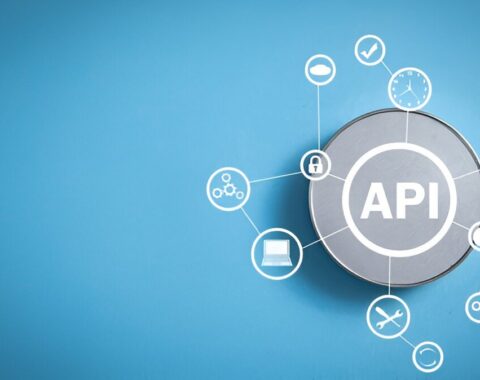
AI projects often start with excitement but stall when they reach the boardroom. Executives want proof—numbers, outcomes, and strategic impact. Yet quantifying the business value of AI projects is complex because value is often indirect, distributed, or long-term. The key lies in translating technical results into tangible business metrics and communicating them in language leadership understands.
Why Measuring AI Value Is a Strategic Imperative
AI isn’t just a technology—it’s a business transformation tool. But without measurable outcomes, even the most sophisticated models risk being labeled as “R&D experiments.” Measuring AI value bridges the gap between innovation and accountability.
Executives prioritize financial metrics, operational efficiency, and risk reduction. Therefore, every AI initiative—whether predictive analytics, process automation, or intelligent forecasting—must be tied to clear business outcomes: revenue uplift, cost savings, customer satisfaction, or speed to market.
According to McKinsey, organizations that link AI initiatives directly to business KPIs are 2.5x more likely to see significant returns. This alignment transforms AI from a cost center into a value creator.
Defining the Business Value of AI Projects
To measure the business value of AI projects, start by mapping technical goals to business objectives. For instance:
- AI-driven demand forecasting → inventory cost reduction
- Chatbot automation → customer service efficiency
- Predictive maintenance → downtime reduction
Value isn’t only financial. AI can also improve compliance, enhance employee productivity, or enable faster decision-making. The challenge is quantifying these soft benefits with measurable proxies such as time saved, error rate improvement, or retention impact.
Key Metrics for Measuring AI ROI
Executives understand metrics. Translating AI outcomes into measurable terms makes the conversation credible and strategic. Consider tracking these four categories:
- Financial Impact: Measure ROI, cost savings, and revenue growth attributed to AI automation or insights.
- Operational Efficiency: Quantify time saved, process optimization rates, or accuracy improvements.
- Customer Experience: Track satisfaction scores, churn reduction, or engagement growth.
- Strategic Advantage: Assess speed to innovation, data-driven decision adoption, or market differentiation.
Using a balanced scorecard approach ensures both short-term performance and long-term strategic value are communicated effectively.
How to Communicate AI Value to Executives
Communicating AI success is as critical as achieving it. Executives rarely need algorithm details, they need impact clarity. The goal is to bridge the gap between technical depth and business vision.
How to Present AI Value to the C-Suite
- Start with business goals – Tie AI outcomes directly to revenue, cost, or risk reduction objectives.
- Use storytelling – Explain how AI improves a real process or customer outcome.
- Show quantifiable results – Use KPIs, not technical jargon, to illustrate performance.
- Compare before-and-after impact – Executives respond to tangible contrasts, not abstract metrics.
- Visualize outcomes – Use dashboards or visuals that align with business KPIs.
Communicating effectively also means contextualizing uncertainty. AI results often evolve over time, and being transparent about assumptions builds credibility with leadership teams.
Case Example: AI in Predictive Maintenance
A large manufacturing firm implemented a machine learning model to predict equipment failures before they occurred. Initially, engineers focused on model accuracy (92%) and algorithm performance. However, executives remained unconvinced—until the team reframed the outcome.
By showing that predictive maintenance reduced downtime by 18% and saved $4.2M annually in lost production hours, the project gained executive sponsorship and additional funding. The lesson: translate accuracy into impact.
Common Pitfalls When Measuring AI Impact
Even with clear frameworks, organizations often make avoidable mistakes when calculating AI’s value. Be mindful of these challenges:
- Overlooking indirect value – AI may create efficiencies that benefit multiple departments beyond initial scope.
- Ignoring scalability – ROI often compounds as AI models scale across the enterprise.
- Failing to align metrics – Technical KPIs (like model precision) must connect to business KPIs (like reduced returns or faster sales cycles).
- Underestimating change management – Human adoption is often the biggest factor in realizing AI value.
Bringing AI Measurement Into the Business Framework
AI success should live within existing business measurement frameworks—not outside them. Integrating AI KPIs into enterprise dashboards ensures accountability and visibility across leadership.
At Pexaworks, we help organizations embed AI metrics within operational systems, aligning data science initiatives with financial reporting.
Additionally, defining an AI Value Communication Framework—which ties model metrics to ROI narratives—can help teams standardize reporting across projects and regions.
From Insights to Investment: Making the Executive Case
Executives fund outcomes, not algorithms. When AI teams present data in terms of competitive advantage or revenue opportunity, projects gain traction faster. The most effective communicators link AI to strategic goals like customer retention, market expansion, or innovation velocity.
Explore how Pexaworks enables enterprises to unlock measurable ROI through AI engineering and enterprise modernization.
Speak the Language of Value, Not Algorithms
AI value isn’t just in the data it’s in the story you tell with it. When teams measure performance in business terms and communicate through strategic outcomes, AI becomes a visible contributor to growth. The companies that master this alignment will not only scale their AI initiatives but also win executive trust in the process.
Ready to translate AI outcomes into executive-ready insights? Start your AI journey with Pexaworks today.


